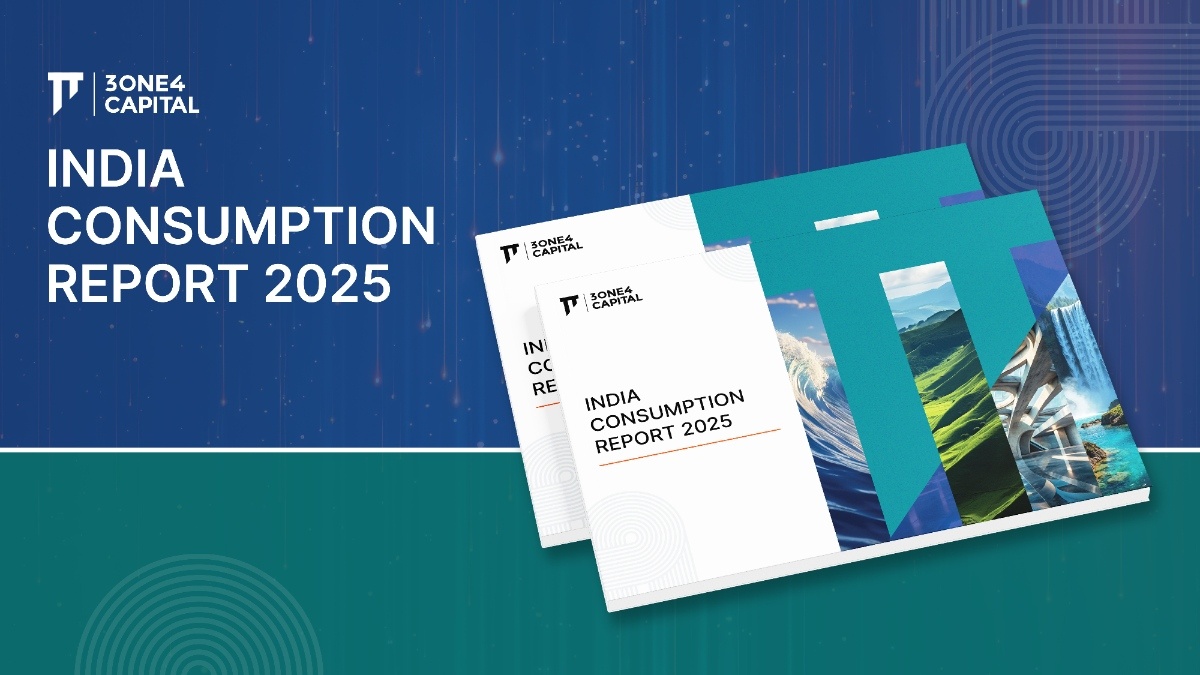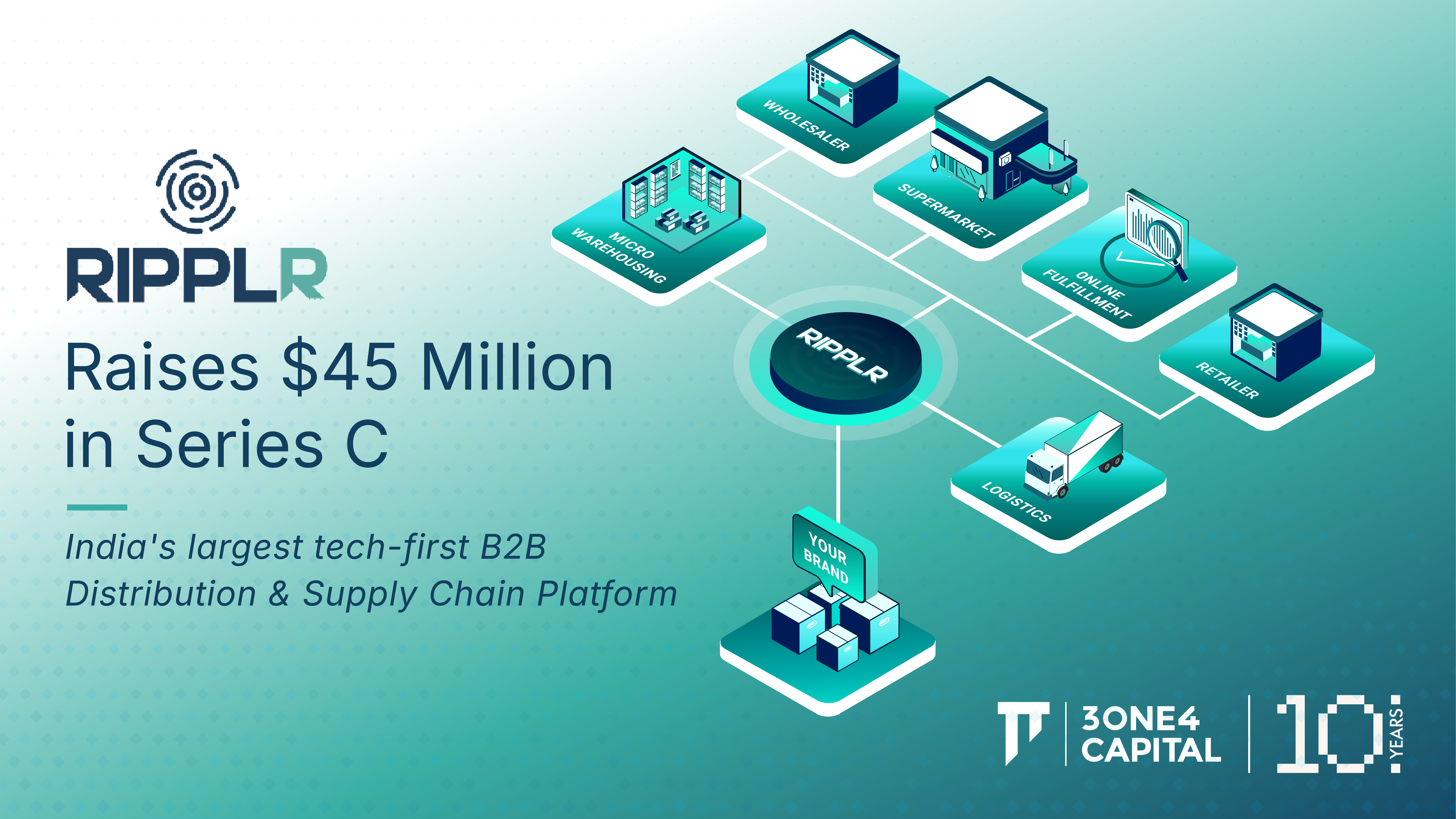
Unlocking The Next Frontier of Consumption in India
The consumption narrative of India's economy is at a pivotal juncture. As per a recent report by Nielsen, 720 million users were online in India at the end of December 2022. However, only a quarter of these users actively engage in e-commerce transactions. As India's online presence continues to expand, there are two large pockets of opportunities that excite us today:
1. The gap between the current number of total online users and those actively transacting remains substantial. The next generation of businesses that aim to bridge this gap presents a massive opportunity to build sustainable distribution engines and unlock India’s next leg of consumer growth.
2. Content is an enabler, often serving as a gateway for first-time internet users. Businesses that are built at the intersection of enabling first-time internet users to transact present an unparalleled business opportunity.
Today, as the consumption story continues to evolve, we believe that the following categories will ride the consumer consumption in India:
India in Numbers
As the pioneer of the ‘sachet’ economy, India has long been recognised as a market driven by mass consumption. By 2025, India is well positioned to become one of the largest e-commerce markets, with a projected online buyer base ranging between 350-400 million. Over the last few months, we spent time understanding what users are willing to pay for and how discretionary spending is evolving in the country.
- On average, Indians spend $121.2 per year on food delivery
- 60% of Nykaa's sales came from beyond tier-1 cities in India, with an AOV of $22.6.
- $10-11 billion was spent on fashion alone last year

The New Indian Consumer
As net disposable income in Indian households continues to increase, a new cohort of users is emerging with the potential to be the next frontier for consumption in the country.

The next leg of consumer growth in India will be driven by users who represent the thriving middle-income category that comes from beyond tier 1 in India.
Over the past few months, we studied the characteristics of the new Indian consumer, their purchasing behaviour, and how to acquire them in a commercially sustainable manner. Our findings uncovered that -
- The numerous brands we engaged with have witnessed a surge in demand beyond India's metropolitan cities. In certain instances, as much as 30-40% of their sales come from locations beyond tier-1 cities.
- These users exhibit faster repeat rates and better overall retention compared to users from tier-1 cities.
- Interestingly, during customer conversations, we found that most users remain loyal to a brand due to its aspirational or functional value.
- There is an increase in willingness to spend across emerging commerce categories. As per a recent report by Google, 25% of growth in consumption will be fuelled by premiumisation.
- Omni-channel businesses are making noteworthy breakthroughs in the country's market.
- Innovative deals and reward systems have driven improvements in conversion funnels and stimulated impulse buying.
Unlocking Consumption
The first generation of commerce businesses in India aimed to build digital-first pathways for discovery and acquisition. Unlocking the next frontier of consumption will require intentional and widespread initiatives to create lucrative outcomes.
Brands are already expanding their reach beyond tier-1 in India by leveraging both online and offline channels. Over the last year, we observed that:
- Search behaviour is increasingly moving towards marketplaces to drive purchase decisions.
- Regional languages are significantly shaping how brands establish themselves in users' minds. Our observation reveals that brands employing native or local languages experience notably higher conversion rates from their ad spends.
- Increasingly, product discovery and trust building are happening over social media channels, and content creators are playing a pivotal role in purchase decisions.
Meet Your Users Where They Are
Although conventional methods have yielded some results in reaching this user demographic, these channels haven’t been entirely successful in delivering scale and attractive unit economics. To effectively engage this audience, it’s essential to delve into the social clout of these users and identify ideal Key Opinion Leaders (KOLs) for respective products and services.
Additionally, there is a growing inclination among companies to establish and enhance their offline presence, starting from beyond tier-1 in India. With lower rentals and high-demand pockets, these cities have the potential to generate very high returns at a per-store level, improving overall profitability.
For Instance, over 60% of SUGAR Cosmetics’ revenue comes from beyond tier-1 in India. By focusing on this market, the company has been able to unlock 90% growth in revenue and 15% improvement in bottomline.
Recently, one of our portfolio companies, Kapiva, launched its promoter program. Through this program, the company set out to enable assisted selling in offline stores across General Trade (GT) and Modern Trade (MT). In a short span of a few months, they scaled this initiative to ~250 stores with each store breaking even in less than 4 months. Furthermore, this program empowered Kapiva to foster a trust-driven bond with their clientele, resulting in over 20x surge in sales through this channel.
Affiliate and Referrals as an Engine
As digital CACs continue to soar, especially around the upcoming festive season, there is merit in exploring well-oiled referral engines to unlock growth. Given the value-centric nature of this audience, empowering your users to become brand advocates offers a dual advantage: not only does it lead to cost-effective CAC, but it also enhances the retention of existing users.
Off-late, Blissclub has impressively used the referral as well as affiliate engine to drive virality for an otherwise commoditised product.
Blissclub Activewear - Loved by Kusha Kapila & 2 lakh+ other Indian women
Make Your Content Your Hero
In India, data consumption per smartphone is the highest globally, at 15.7 GB per month, and it boasts a staggering user base of over 637 million smartphone users. By 2026, these figures are expected to reach over 37 GB per month and 900 million, respectively. Additionally, the number of active social media users in India, which currently stands at around 448 million, is projected to reach 650 million by 2026.
Therefore, harnessing India's affinity for content and content consumption is pivotal to the process of acquiring this emerging user cohort.
As per recent data shared by the government, WhatsApp has over 53 crore users, followed by YouTube with over 44.8 crore users in India. Facebook's presence accounts for approximately 41 crore users, while Instagram has a substantial base of 21 crore.
To establish effective engagement on these platforms, it's essential that the content and messaging align seamlessly with these key principles:
1. Functional Value - Over the last few years, we have observed that brands that are able to communicate and deliver functional value at competing price points have been able to drive better conversions and retention.
For instance, Lifelong is an example of a brand that is committed to delivering functional value at more affordable prices in the appliances category. With a catalogue that’s typically better priced than its peers, Lifelong has been able to service its customers by offering comparable and occasionally enhanced features, while maintaining a price point that instils a resounding ‘value for money’ perception among its users.
2. Aspirational Value - In contemporary India, aspirations significantly steer consumer purchase choices. We're witnessing a surge in the willingness to pay, provided the underlying product or service can articulate a distinct and compelling narrative of aspiration.
KukuFM, one of our portfolio companies, is an example of how one can capture an aspirational audience to unlock a market that’s otherwise massively underserved. With different mass genres that aim to make life better off the screen, KukuFM has grown over 25x in the last 12 months and scaled to over 1.8M paid subscribers. Categories that attract maximum interest on the platform today include Finance, Motivation, Biography, Business, and Parenthood.
3. Regional Relevance - India is a nation characterised by its diverse regional languages and cultural traditions. Embracing these regional nuances to convey messages not only accelerates conversions but also establishes stronger brand recall.
While brands are progressively striving to adopt regional languages to tap into this versatility, we have witnessed that incorporating diversity into the core of a consumer business can create remarkable long-term value.
Having invested early in Licious, we observed this subtlety come to life. The brand doesn't just advertise in various regional languages but also celebrates the distinctiveness of each region through its diverse product range. Whether it's Lucknowi gulaoti kebabs or Chicken ghee roast, Licious has curated a purposeful catalogue that recognises the ever-changing taste preferences across different parts of India.
With the increasing influx of online users in India, there is an opportunity to deliver significant outcomes by focusing on demographics that are large, growing, and untapped. The emergence of the new middle-income category in the country presents a compelling chance to tap into consumer behaviours that will define consumption for the next generation.

As businesses continue to expand, leveraging the right distribution and acquisition mix is imperative towards building substantial and sustainable outcomes. With a new cohort of users wielding immense spending power, the consumption story in India is just at the tip of the ice-berg.


.webp)












